Since its foundation, Google has placed great value on presenting users with search results which best and most accurately correspond to their search query. Take a look at Google’s “Ten things we know to be true” – their company philosophy. The first item is:
“Focus on the user and all else will follow.”
This simple sentence reveals straight away what we need to do when it comes to search engine optimization. We need to produce quality, high-value content tailored to the user to satisfy their needs. For webmasters, the number one focus has to be the user. Using different user signals such as length of stay and bounce rate, Google can determine whether the user found the information provided on your website useful. Or maybe the user isn’t looking for information – maybe they already know and want to buy? Maybe they’re looking to contact a company and are looking for a phone number, contact page or e-mail address? Google searches have many different motives.
So when it comes to keyword analysis, we shouldn’t just be looking at search volume but rather what intentions are hidden behind the search. If your website satisfies user intention, you’re on the right track to achieving good search result rankings.
Different types of keywords
Let’s take a look at what type of search intentions could be behind a keyword. In their Quality Rater Guidelines, Google divides keyword types into the following categories:
- Do (transactional)
- Know (informational)
- Go (navigational)
We can add one other, too – Brand Search.
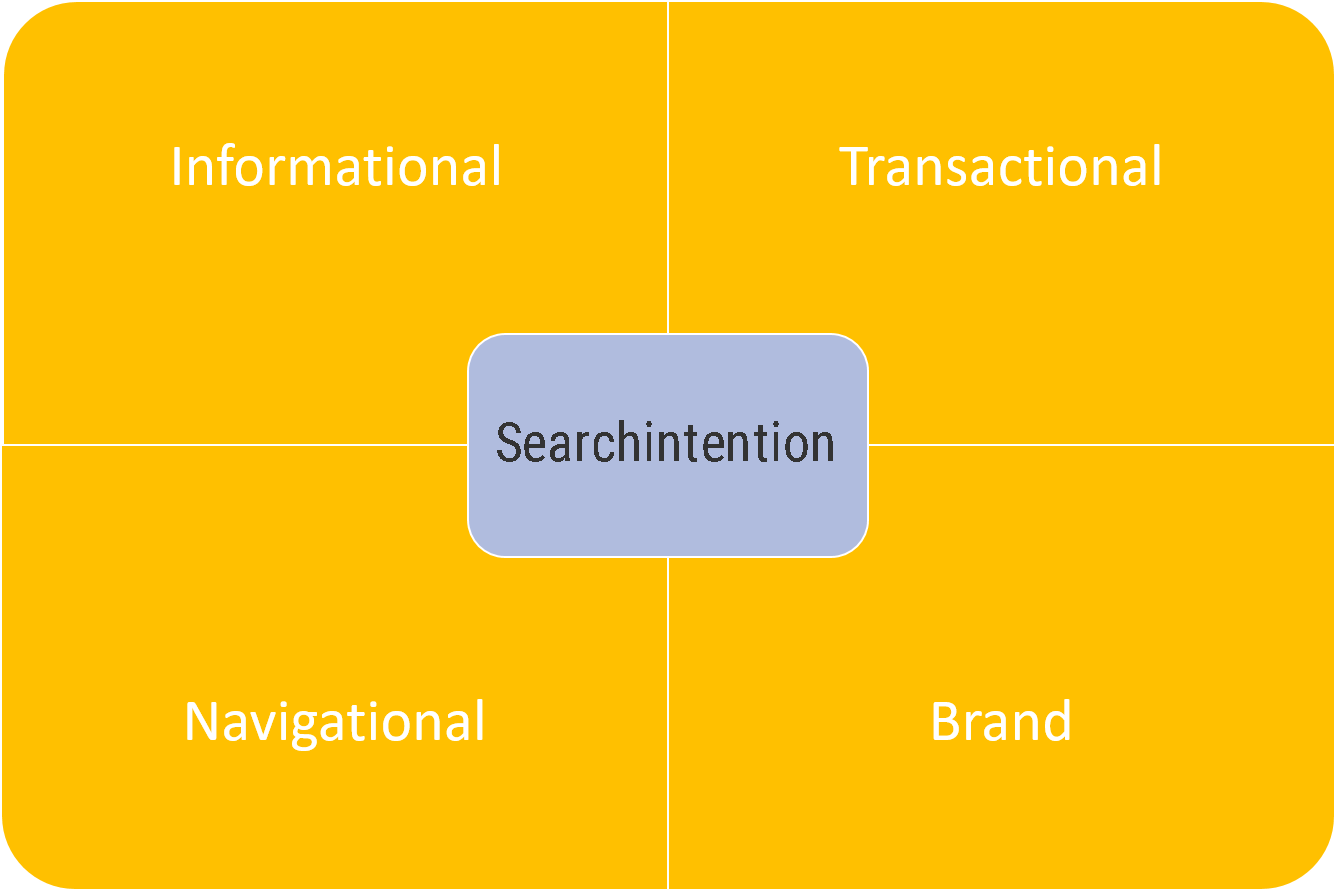
Informational keywords
Informational keywords are used when the user wants to learn more about a subject. They are not looking to conduct any transaction, such as a purchase – they’re merely looking for information. An informational keyword could be “SEO” – a very general subject. The user is interested in the topic and is looking for information about it online. Eventually, an initial search for information could develop into a purchase intent – but let’s leave that for the time being.
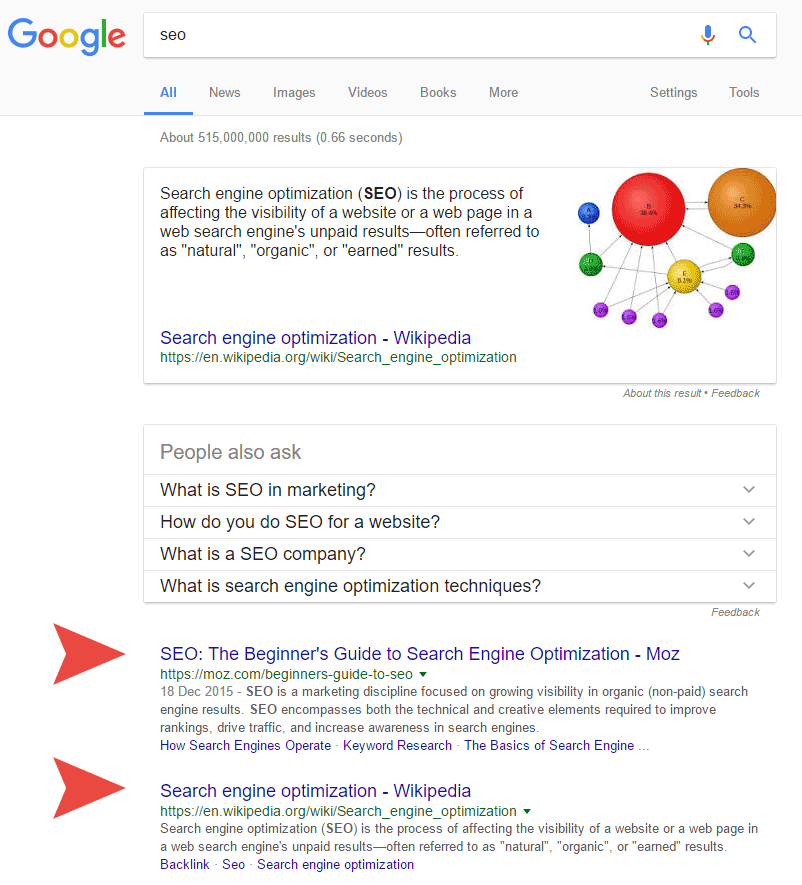
Transactional keywords
Contrary to informational keywords, users use transactional keywords when they want more than just information – they intend to carry out a transaction, usually a purchase. Such a keyword could therefore be “order XOVI Suite.” Of course, the user requires information here too – but the primary objective of this search is clearly an intent to purchase. The user already knows that the XOVI Suite exists and would like to either purchase or test it out. He or she is looking for product info/pricing page on which to conduct a transaction. Transactional keywords are also known as “commercial keywords.”
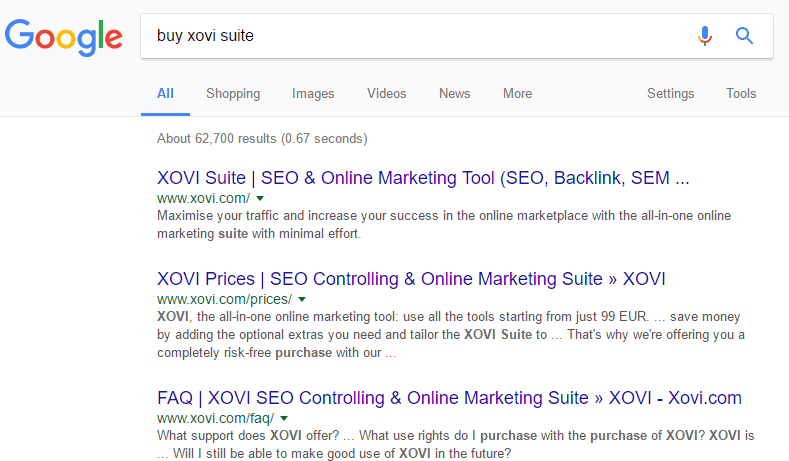
Navigational keywords
Again, the name says it all. When a navigational keyword is used, the user already knows what website they are looking for but don’t know the exact URL and are googling it instead. Sometimes, users even enter URLs themselves in the search bar. Often, users are looking for contact details when they use navigational keywords, so they might search for “XOVI phone number.” Try it out for yourself.
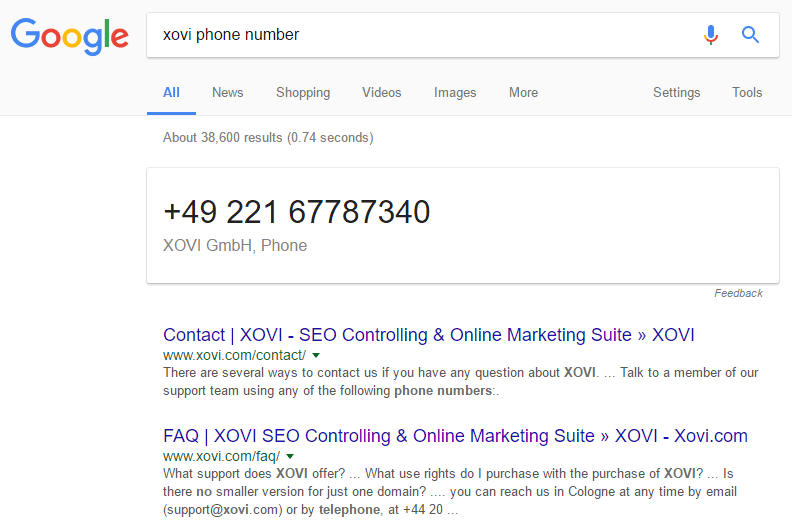
Brand search
When a user searches for a particular brand name, it is clear that they are looking for information related directly to that brand. If a user searches for XOVI, they want information about the company. If someone searches for BMW, they expect that company to appear top of the search results. Back in 2009, Google rolled out its Vince Update (Brand Update). In it, Google specified that brands enjoy priority positioning for searches for their specific brand keyword, meaning BMW should always appear higher – even if another website exists which provides much better information about BMW than the company themselves.
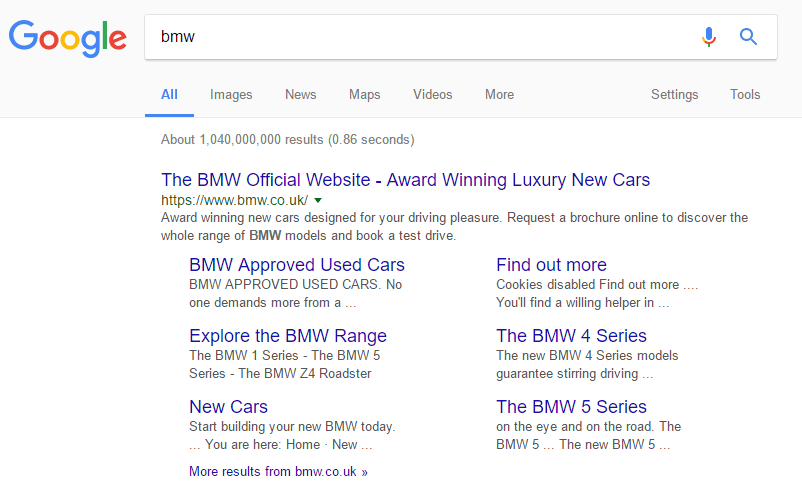
Webmasters who want to achieve high rankings in Google and who want to boost search engine traffic have to offer content which corresponds to the needs of users / potential customers. To this end, it’s important to find out what intention the user has when they search for a particular keyword. Without this knowledge, how can you offer the appropriate content?
How to identify search intention
The simplest method is to have a look at the search results themselves! Simply google a keyword for which you would like to optimize your website content. Let’s assume we have a company which sells quadcopters – drones with cameras and other devices attached. By analysing different keywords, we can see what sort of different results are generated. Google bases its results on a wide variety of information and data about user behaviour so they are usually well placed to determine search intention. Let’s see what type of content Google offers us in response to our search.
Google: “quadcopter drone laws.” We can tell straight away that this is an informational keyword. I am likely to be a drone owner or at least someone who his considering purchasing a drone but would like more information about the legal issues first.
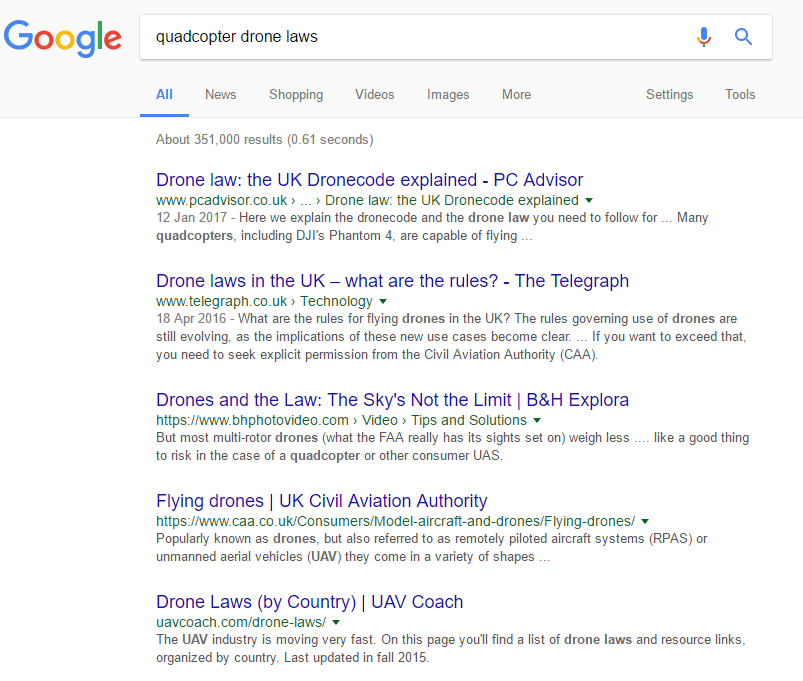
As expected, we can see from the first few search results that the websites deal with the subject. Just from the result headings, we can tell that these are informational results corresponding to an informational search – even though the word quadcopter is contained in the search, Google doesn’t immediately offer product or sales pages. The user wants information and Google tries to respond accordingly.
Now, the test …
Now let’s turn it around and search for a transactional keyword – “buy quadcopter.”
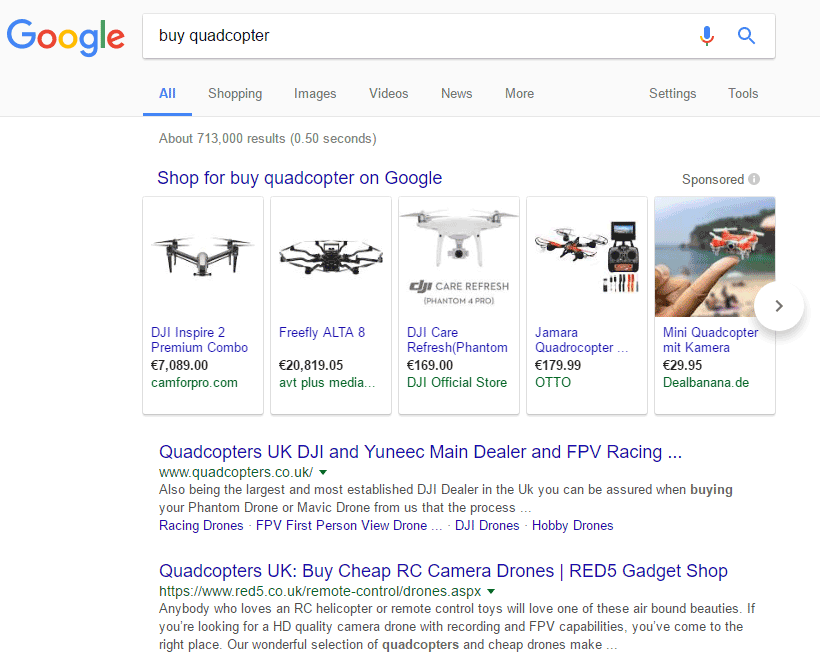
Here we can quite clearly see a very selection of search results. Right at the top, we can see Google Shopping results – the search engine has correctly identified the purchase intention. The organic search results also feature product pages such as quadcopters.co.uk and red5.co.uk. Amazon is also featured inside the top five results.
Conclusions for your search engine optimization
You can identify suitable keywords for your content development using XOVI’s keyword analysis (see our blog article: … ) Remember, if a user is searching for an informational keyword such as in our first example, there’s no point in producing a transactional page. The user doesn’t want to be bombarded with purchase options; they only want information. Likewise, if you’re looking to optimize for a transactional keyword such as in our second example, make sure you offer a product page. You target user has already decided they want to buy – so don’t give them a detailed page of text about the legal issues. They already know!
Another example
Let’s have a look at another example which isn’t as clear cut. Searches which contain words like “buy” or “order” are pretty obviously transactional, but what about more ambiguous searches? Let’s take “hand cream” for example. How does Google categorize this?
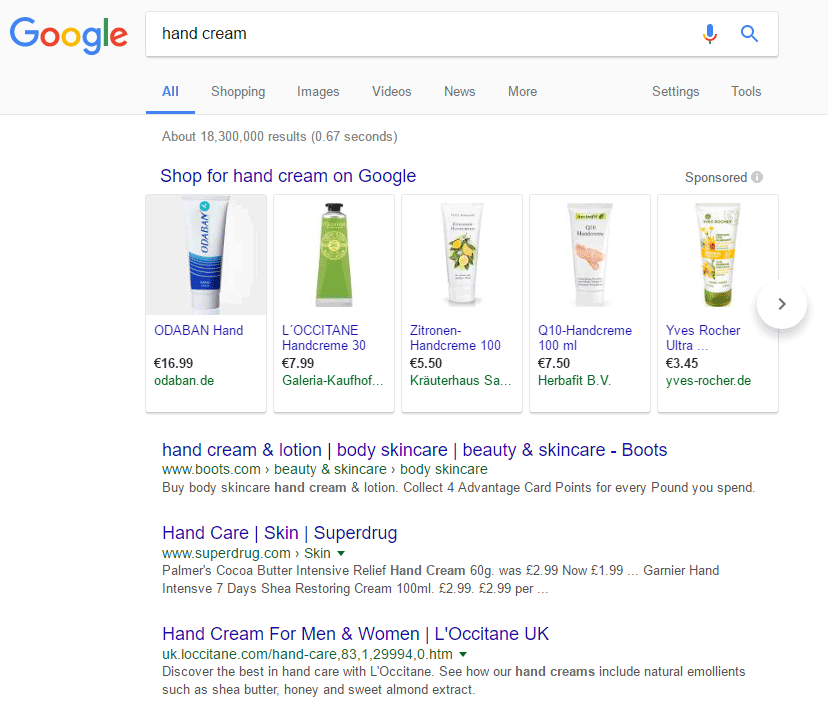
Look at the results. Boots, L’occitane and Superdrug are all clearly online shops where you can order hand creams online. There are also Google Shopping results right at the top. Google has obviously identified assumed a purchase intention and categorized this search as transactional/commercial. Sometimes, an informational Wikipedia entry might rank highly for ambiguous terms such as this – not that the average user needs Wikipedia to tell them what exactly hand cream is! Otherwise, it would be extremely difficult to produce informational content about hand cream which is exciting, informative, unique and dynamic enough to rank highly.
Tip: Sometimes, a single, odd result (informational result for a transactional keyword), could be a Google test – don’t rule this out.
Conclusion
By closely analysing search intention, webmasters can take a significant step towards satisfying their users. “Focus on the user and all else will follow,“ says Google. Satisfy them – and the rankings will come.
